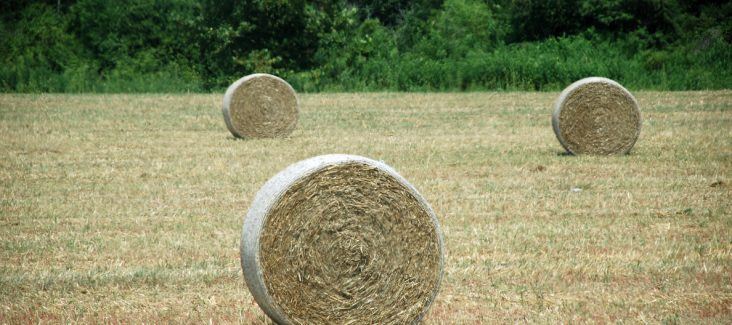Pastureland owners advised to consider fertilizer recommendations
by March 25, 2024 11:57 am 772 views

Arkansas has more than 4.5 million acres of pastureland and another 1.5 million hay land acres, according to the U.S. Department of Agriculture. For those who own or rent those acres, they must decide if the expense of adding fertilizer each season is worth it.
Dirk Philipp, associate professor of forage agronomy for the University of Arkansas System Division of Agriculture, said it all comes down to what your soil really needs.
“Fertilizer is an expensive input to livestock agriculture,” Philipp said. “The basis for the decision when and how much to apply is a regular soil sampling plan.”
At a minimum, Philipp said, soil samples should be taken every two years.
“Not only will this help producers fertilize pastures in a more targeted fashion, it also serves to record how much soil fertility changes over time,” he said.
The Cooperative Extension Service provides cost-free soil analysis. Arkansans can find their nearest extension office in the extension’s online directory. Once growers receive their results, Philipp said, they should carefully check the recommendations, particularly the pH balance of the soil as well as the potassium, phosphorus and nitrogen levels.
“It’s important to know the acidity of your soils,” Philipp said. “It’s no problem if it’s about 6.0 — many pastures are — but avoid letting it drop too low. Bringing it back up will take time and easily require a couple of tons of lime per acre.”
Pastures that have historically been fertilized with chicken litter won’t normally be phosphorus-deficient, but growers should try and keep their levels well within the normal range so they have “room to spare” in changing conditions, Philipp said.
“Potassium is an important element for plant cell function and one that affects plant health and productivity immediately,” he said. “Unfortunately, it is also quite expensive to apply.”
Philipp encourages growers to keep adequate potassium levels in soil, so they don’t find themselves suddenly needing to make large investments in the nutrient.
“Both phosphorus and potassium can be applied in advance, so if you know how much might be missing, you can fit those in your budget better,” he said.
Nitrogen, Philipp said, is the most limiting nutrient for plant growth and should be applied right when it’s needed.
“Keep in mind that both cool and warm season plants grow most rapidly in spring because of increasing day length and temperatures,” he said. “They will substantially reduce their growth rates during fall due to decreasing day length and temperatures.”
When it comes to linking fertilization with pasture management, producers may need to address an additional host of issues, he said.
“When applying nitrogen to tall fescue in spring, are you able to actually graze it off and avoid fescue toxicity as much as possible? You may be better off applying it in early September for stockpiling,” Philipp said.
“Some forages, such as orchardgrass, definitely need additional nitrogen to be productive, while tall fescue is less sensitive to skipping a year,” he said. “Native warm season grasses can do without nitrogen fertilization for a long time. Hay crops of any kind including summer annual forages require a fertilizer budget and should be planned accordingly.”
Pastureland values continue to grow in Arkansas, according to Arkansas Farm Bureau. During the last year, cash rent values for those acres have risen to $20.50 per acre. Land values for those acres are up 5% to almost $3,550 per acre on average statewide.
